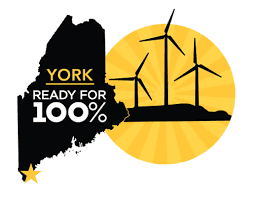Getting Ready: Trees can save us – if we let them
Over the last few years great surprises about the lives of trees and forests have been identified and explained by forester and writer Peter Wohlleben (and others). Wohlleben manages a woodland in Germany and has distilled 20 years of observations into a treasure: “The Hidden Life of Trees: What They feel, How They Communicate: Discoveries from a Secret World.”

In recent decades it has become clear, Wohlleben writes, that a group of trees of the same species growing undisturbed in the same area are connected to each other through their root systems. Such connections are made possible by a network of microscopic filaments formed by fungi, thereby creating a vast underground forest network. Through their root systems and signaling via underground strands of fungi, trees are alerted to drought, flood, insect hordes and marauders - human and other. Even their branches grow in ways that allow light and moisture to be shared. Indeed, when we look up into the treetops of a mature forest, we can see that branches are distributed to allow light to filter down to trees below. Their communication systems and growth habits have made possible their health and survival over centuries; their interdependence sustains them (note that a 100-year-old tree is still young).
Getting Ready: Efficiency Maine offers rebate opportunities to save energy and money
Such information is astounding, yet terrifying when we think of the damage done by humans and big corporations in their search for profits and expansion. Not knowing is no longer an excuse, because now, through the writings of scientist/authors like Paul Hawken, Peter Wohlleben and others, people do know, or can search out the true impact and significance of their actions in relation to the environment.
Paul Hawken in “Regeneration” takes us to the boreal forest of northern Canada, known simply as “the boreal.” “Boreal” refers to dense forests, sometimes of a single species, that encircle the northern regions of the globe from Alaska to Canada, to Scandinavia, Russia, and to the northern tip of Japan. The Alaska-Canadian forest, known as “the boreal,” covers about 1.2 billion acres and is “the largest unbroken expanse of contiguous forest, peatlands and wetlands on the planet.” It is home to hundreds of indigenous communities that live off the land and its animals. The enormous animal population includes wolves, grizzly bears, bison, caribou, moose, lynx, wolverines, badgers and many smaller animals such as martens, beavers, minks and (seasonally) up to 5 billion migratory birds. The expanse seems infinitely beautiful.
Most important, however, is that the area, its lakes, forests and peatlands contain more carbon than any other area on earth: it holds 1,140 billion tons of carbon in soil and biomass, 50% more than in the atmosphere.
Yet, there is heavy logging in the boreal forest. Why? Well, for the virgin fiber that Proctor & Gamble uses to make Charmin toilet paper (single-use, of course), or Kimberly-Clark’s product Quilted Northern Ultra-Plush. “We flush away, piece by piece, “the greatest carbon sink in the world.” (The border between United States and Canadian logging areas is unclear, but these companies are licensed to cut.) These companies and others say they are logging sustainably because they plant a tree when they cut a tree – overlooking the fact that the trees they cut are at least 100 years old, and the saplings they plant will take decades to mature. The animals there, large and small, have fled and will not return. Their ravaged habitat, now without their dens and nests and usual food sources, will not sustain them. The people who depended on wildlife for sustenance will move, too. It will take decades for the area to be habitable again. And the trees’ sustaining network of fungal filaments is destroyed. Any remaining trees are defenseless and perhaps doomed.
Getting Ready: Bamboo- An outstanding renewable resource
There are other companies cutting trees and using them for bulletins and junk mail, wrapping paper and grocery bags. All of these companies are destroying and polluting, with no excuse except profit. Aside from the crimes of destroying billions of mature trees and countless animals and uprooting thousands of families, they are releasing millions of tons of carbon into the atmosphere. They can and should research and adopt alternative sources and manufacturing methods that spare ancient forests, lives and communities.
All of this is sad news. Although we see and feel some effects of climate change, we feel protected here and have busy lives, and the boreal is far away. Even so, people and animals are suffering, and all that carbon being released into the atmosphere won’t go away. The actions of these companies are immoral, and they endanger all of us.
The better news is that we have power, too. Paper is recyclable. We make choices every day in the way we shop, how we get our news, read our books, and feed our printers. We can vote for legislators for whom climate change is a chief concern. There is power in our voices and our votes. Let’s talk to our legislators and insist on their attention to these issues. Their emails are online.
Susan Glick volunteers with York Ready for Climate Action. YRCA is a citizens’ organization dedicated to increasing awareness of the causes and effects of climate change and advancing environmentally friendly and inclusive policies and behaviors. Volunteers are welcome. See yorkreadyforclimateaction.org or email info@yorkreadyforclimateaction.org. EcoHOMES in on the same site.
This article originally appeared on Portsmouth Herald: Getting Ready: Trees can save us – if we let them
